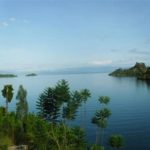Rights In Cattle
Parallel to the system of land tenure with its competing lineage and government spheres of interest, we find in Rwanda a complex of rights and obligations in cattle which similarly differ in the context of individual and government control. In practice rights in cattle cannot be divorced from rights in pasture.
Before dealing with the rights in cattle themselves some attention should be given as to the total extent and the incidence of cattle possession in Rwanda especially in relation to the concept that Tutsi are pasturalists and Hutu agriculturalists. The data available are inadequate in many respects. For instance figures are given for the “possession” of cattle in which it is not clear whether “possession” refers to ownership or usufruct rights.
Nevertheless some useful conclusions can be inferred from the data. According to one source (Van Neessen, 1953 p. 1027) 39.6 per cent of all Rwanda households possessed cattle in 1952. In areas with an above-average incidence of Tutsi in the population, i.e. between 15 and 25 per cent, the extent of cattle possession rises to 55 per cent. As for other parts of Rwanda, Bourgeois notes of the provinces Shangugu, Kisenyi, Biumba and Ruhengeri, that the cattle generally belonged “en toute propriétéà la population autochtone Muhutu et à des éleveurs Bahama” (1958 p.58).
The latter group refers only to the province of Biumba, which had 7.5 per cent of all the cattle of Rwanda.
According to the Plan Décennal moreover 30 per cent of all the cattle of Rwanda were to be found in these four provinces outside central Rwanda.
Although these numerical data relating to cattle possession do not allow for too definite conclusions, they permit us to raise certain points which are of relevanceto the extent of the ubuhake system and the classification of Tutsi as pasturalists and patrons and Hutu as agriculturalists and clients.
First of all 30 per cent of all the cattle were in those areas where there was no clientage system. Either the cattle were held in these areas “en toute propriété” bythe Hutu population or by the Hima who “…n’offrent aucun contract de servage aux agriculteurs” (Rwanda-Urundi I959 p.234).
This contrasts with -Maquet’s observations:
“those who have the final control of cattle were always Tutsi, as the Hutu had been granted only usufruct rights over cattle which were different from those enjojred “by the lords who were Tutsi, owners could be invaded by Hutu” (,1961 p.139)
or
“the feudal system permitted the Tutsi to keep control of all Rwanda cattle” (1961 p.148),
or
“By that agreement (ubuhake), almost any Hutu was linked to a Tutsi” (1961 p. 150).
These quotations seem to infer firstly that all- Hutu were clients of Tutsi, who were lords. However this classification of the population of Rwanda would assume universal participation in the ubuhake system. This division is clearly not an adequate classification as it leaves out those areas where we find approximately 50 per cent of the population. Secondly these quotations infer that only Tutsi owned cattle. However, as we have seen, in these areas we find 30 per cent of the total cattle population in Rwanda in the hands of those who were neither Tutsi nor lords.
Moreover in the centre of Rwanda, where we find an aboveaverage incidence of Tutsi we know that 55 per cent of the households “possessed” cattle. If we take “possess” as meaning ownership, we must infer that as many Hutu as Tutsi possessed cattle as in these areas the Tutsi constituted only 25 to 30 per cent of the population.
If we take it as meaning ownership and/or holding cattle in usufruct, we must infer that the great majority of the Hutu did not have the usufruct of cattle and therefore were outside the ubuhake system. However we could still possibly reserve the term pasturalist for Tutsi if they were exclusively the herders of cattle. Maquet himself however notes that the actual herding was often done by Hutu who were then entitled to some of the milk. He notes: “les Tutsi sont experts en élevage mais ils confient le soin de leurs troupeaux à des Hutu.” (1957 p.58). Herding itself cannot therefore be used for distinguishing Tutsi from Hutu on this occupational basis. Thus classification of Rwandese as patrons or clients or generalisations by which Tutsi are identified with pasturalists and Hutu with agriculturalists need reservation and further specification.
In the previous chapters we have already mentioned some of the uses to which cattle were put. These included the context of ritual, marriage alliances, accession to political office, succession to family headship, rewards for services or valour, gifts, indemnity and taxation.
The economic role of cattle was limited. Cattle were not used for ploughing and manure was not used as a fertiliser. The animals did not produce much meat not only because they were not heavy but also because only about 40 per cent of the animals was usable for food.
Young bulls were slaughtered for meat and hides but the majority of cattle were females Despite this the total milk production was very low. Only one in seven cows were in milk at any one time (Plan Décennal 1950 P.417).
These figures compare very well with Gravelis observations in Remera in 1960-1961. “Most of the cattle are females. In the herd of thirty one cows never more than four or five at
a time give milk. When there is milk it was to be shared with the calf.” The best cow may produce an average of one quart a day during its time of lactation, which is constantly interrupted by pregnancy (F. Marchi 1939):
However the economic importance of cattle cannot be measured exclusively in terms of the foodstuffs produced, but must also be seen in relation to its place within the total subsistence economy of Rwanda. We have already touched upon the fact that cattle constituted a reserve in times of famine when blood was consumed. Moreover access to milk is related to the well-being or even the survival of small babies since it was given to nursing mothers to feed their children. Furthermore cattle were a preferred form of payment in marriage alliances. More-over the economic importance of cattle cannot be divorced from the fact that we are dealing with a non-money economy where techniques for storing perishable goods were severelylimited and where there were no markets for trading outside Rwanda. Cattle however provided a means of storing wealth in that they were only perishable through disease and old age and at the same time they produced calves as interest. Moreover cattle were clearly visible and constituted an external sign of wealth. In comparison with land the successful exploitation of cattle is not related to input in hard labour. Here again, whereas surplus land was improductive, any number of cattle could be made to produce against a time of need.
In the chapter on kinship we have seen how cattle were used in relation to the registration of new relationships such as in marriage and in the designation of an heir. In the chapter on the political structure we have seen how the king and the army chief in the institution called umurundo were presented with cattle and how the ntore gave cattle to the king when he recruited them into the army. Gravel (1967 and 1968 p.168) gives several more instances of transfer of cattle as gifts and notes that cattle moved not only down but also up the social scale, in both cases “recording new relationships”. He sees them as recording devices but excludes their economic value.
However the important point is that even outside the context of receiving cattle in a marriage transaction, receiving or accepting cattle does notnecessarily mean in other Rwandan contexts that the receiver becomes the giver’s client.
Before passing on to the transfer of usufruct rights, rights of ownership must be considered. Official cattle which have been called “veritables monuments historiques”will here not be considered.Transfer of rights of ownershipover cattle could occur through bridewealth, dowry, compensationafter murder, reward for valour, in exchange for goods or labour, as a gift and through inheritance. These cattle were referred to as imbata. Of these rights Maquet notes,:“the king kept the preeminent rights over all Rwanda cattle. Even if he did not use frequently his rights against Hutu, they were not forgotten:the very cows which were not received from a lord but acquired by one’s own efforts and over which the possessor had usufruct plus bare ownership were called ‘King’s cows’ (inka z’umwami) as often as imbata”. (196I p.148)
However this name refers to the fact that these cattle, in case of lack of an heir, became the property of the king and indicates that the rights the owner held were as good as the king’s, i.e. nobody could touch them. Musinga in 1926 said of these rights, « Nul, pas même moi, n’a le droit d’en contester la propriété absolue » (Rapport annuel sur1’administration du Ruanda-Urundi, p. 64). Cattle outsidecentral Rwanda weregenerally imbata. Usufruct rights in these cattle could be given to other people in exchange for goods and services. In Rwanda we find three different institutions relating to this transfer of usufruct rights.
1 . Ubugwate
Example:
A owns an imbata cow and needs other goods urgently and has no other way of obtaining them than through ’’selling” his cow but he does notwant to lose his cow. A would exchange his cow for B ’s male calf. A would then exchange the male calf for whatever he needed and later receives from B either the first female calf born from A’s former cow while B keeps the cow or B keeps the female calf and returns A ’s cow. Other details as to who gets the milk and who gets a male calf which might be born from A ’s cow are negotiated beforehand.
- Ugushega
In the South-West we find this contract between Rwanda Hutu and Mushi from the Congo.Example: the Rwandan A gives five goats and onemale calf in exchange for a cow belonging to the Mushi B, The cow becomes A’s full property but A must render services for a certain period to B and return to Bthe third female calf born from that cow. If it should die before being returned, any other calf has to be given and if there is one, a female calf. - Ubuhake
Since this institution covers a wider field it will be dealt with in greater detail in the next part of this chapter.





